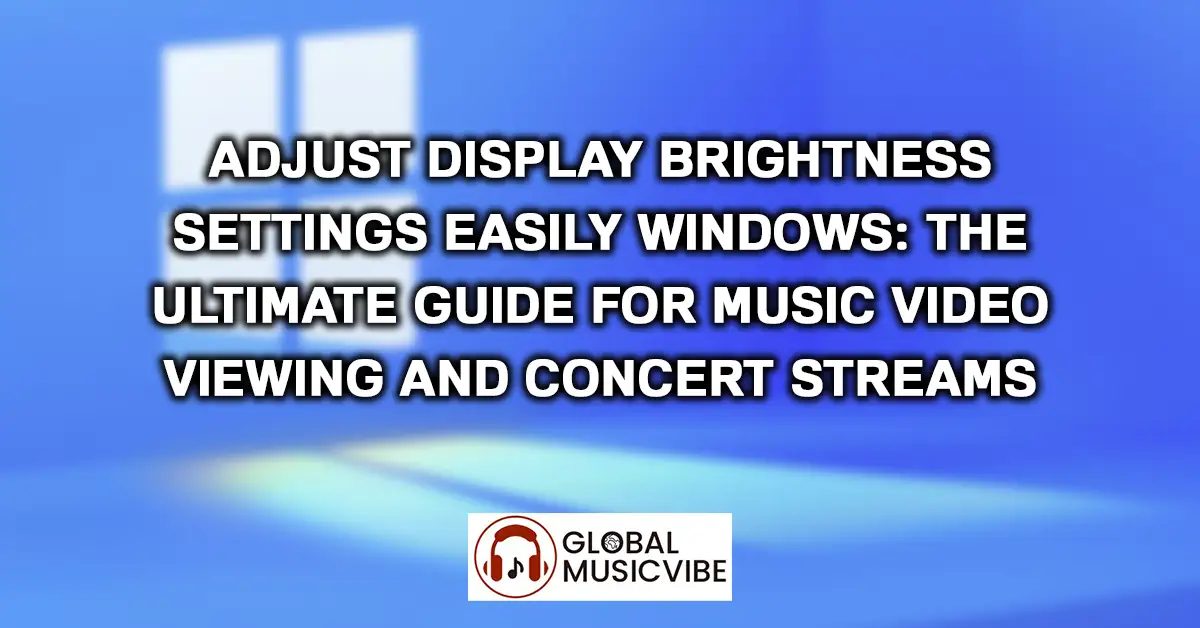Adjust display brightness settings easily Windows systems require understanding both basic controls and advanced calibration techniques, especially when you’re watching your favorite songs or streaming live concerts. Whether you’re enjoying the latest music videos or catching up on concert recordings, proper display settings can transform your viewing experience from mediocre to spectacular.
Music enthusiasts and concert streamers often overlook how significantly display brightness and color accuracy impact their entertainment experience. The vibrant stage lighting in concert videos, the carefully crafted cinematography in music videos, and the subtle color grading that artists and directors use to convey emotions all depend on your monitor displaying colors accurately and at the right brightness levels.
Understanding Windows Display Brightness Controls
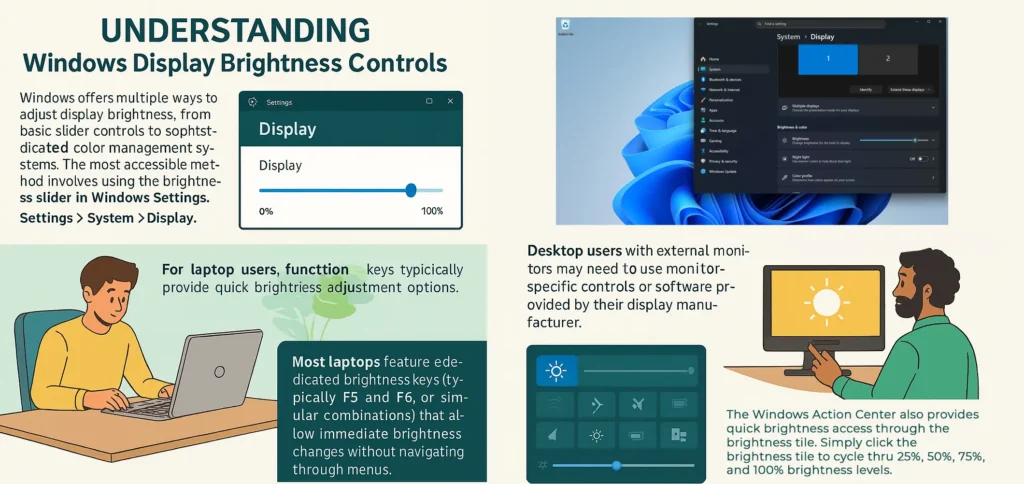
Windows offers multiple ways to adjust display brightness, from basic slider controls to sophisticated color management systems. The most accessible method involves using the brightness slider in Windows Settings, accessible through Settings > System > Display. This fundamental control affects the backlight intensity of your monitor, directly impacting how bright or dim your screen appears.
For laptop users, function keys typically provide quick brightness adjustment options. Most laptops feature dedicated brightness keys (usually F5 and F6 or similar combinations) that allow immediate brightness changes without navigating through menus. Desktop users with external monitors may need to use monitor-specific controls or software provided by their display manufacturer.
The Windows Action Center also provides quick brightness access through the brightness tile. Simply click the brightness tile to cycle through 25%, 50%, 75%, and 100% brightness levels, offering a faster alternative to precise slider adjustments.
Advanced Brightness and Color Management
Windows Color Management system provides professional-level control over how your display renders colors. Access this through Settings > System > Display > Advanced display settings > Display adapter properties > Color Management. This system allows you to assign specific color profiles to your monitor, ensuring accurate color reproduction for different content types.
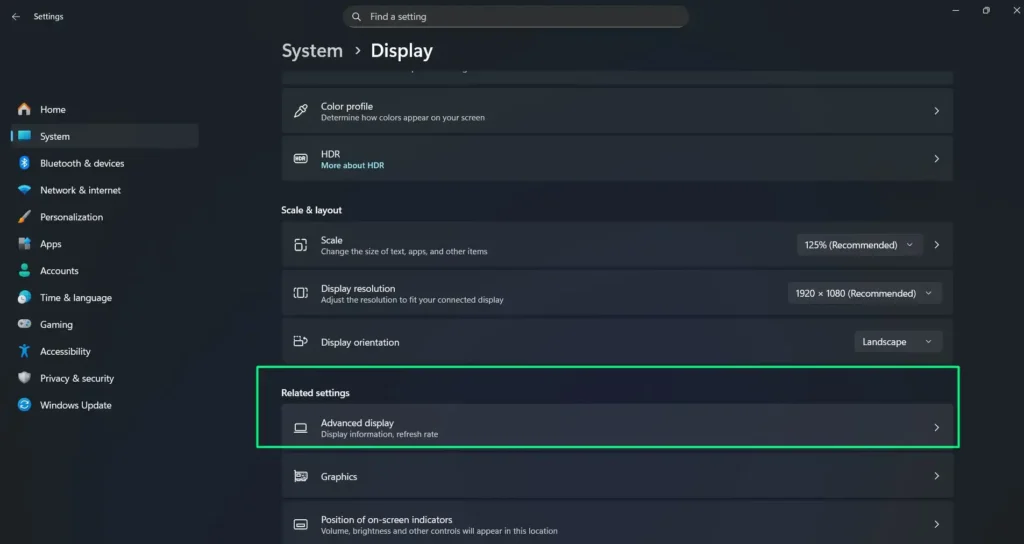
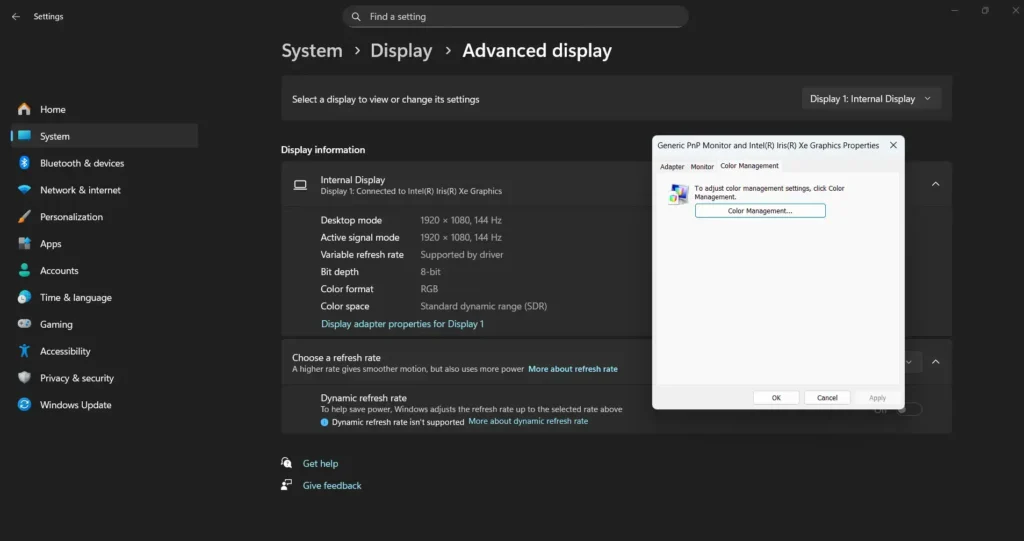
When watching music videos or concert streams, proper color management becomes crucial because these productions often feature elaborate lighting designs and carefully planned color schemes. A poorly calibrated display might render stage lights as washed out or overly saturated, diminishing the intended visual impact.
The built-in Windows Display Color Calibration tool, accessible by typing “calibrate display color” in the Start menu search, guides users through gamma correction, brightness adjustment, contrast optimization, and color balance settings. This wizard-based approach helps users achieve better color accuracy without requiring expensive calibration hardware.
Gamma Correction for Music Content
Gamma correction significantly impacts how your display renders mid-tone colors, which is particularly important for music video content where subtle lighting changes and color transitions create atmosphere. Windows typically uses a gamma value of 2.2, which works well for most content, but music videos with dramatic lighting might benefit from slight gamma adjustments.
To access gamma settings, use the Display Color Calibration tool and pay special attention to the gamma adjustment screen. The goal is to make the center circle barely visible against its background, ensuring proper mid-tone rendering. Music videos often feature complex lighting scenarios where proper gamma settings help distinguish details in both bright stage lights and darker background areas.
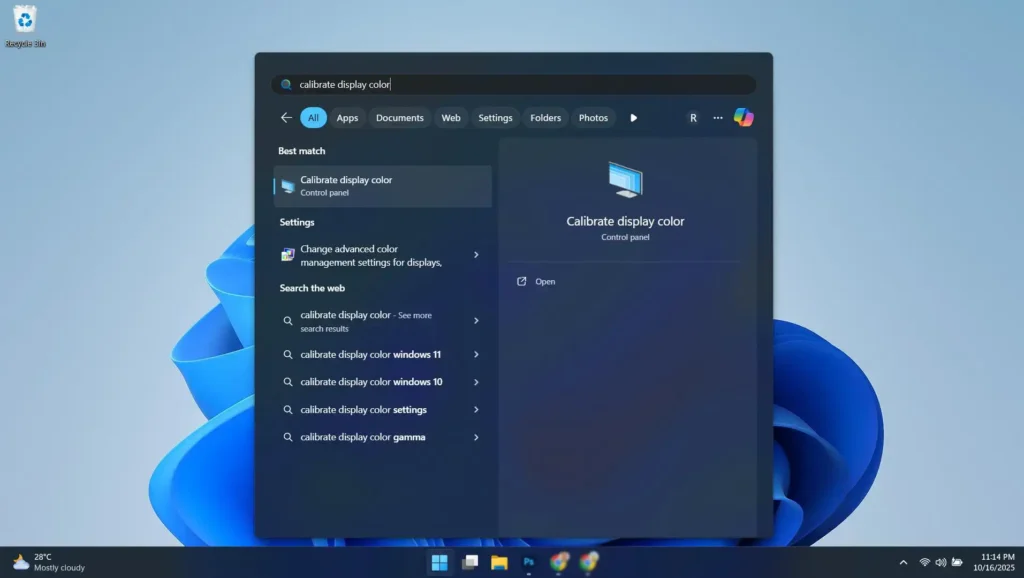
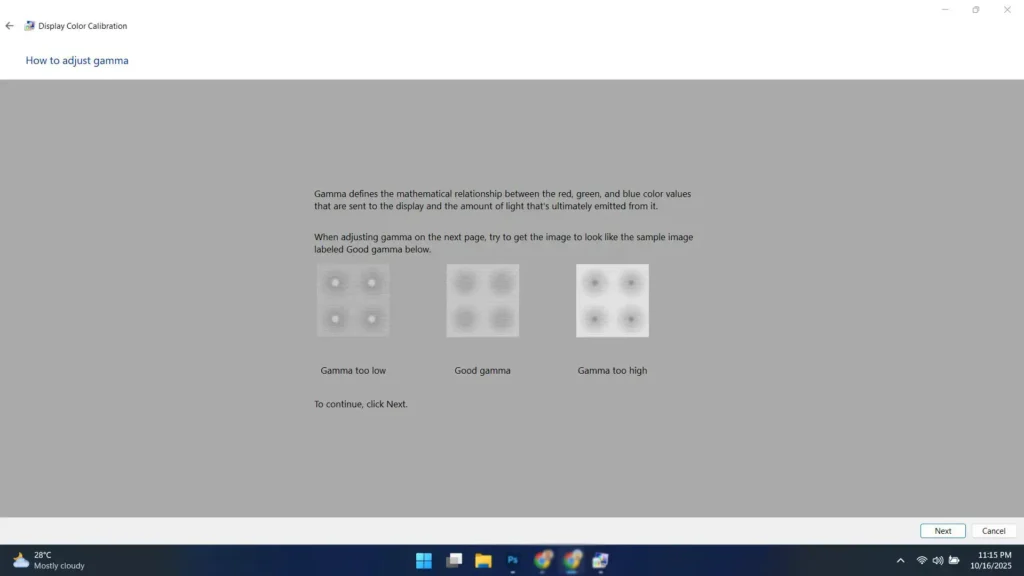
Professional video editors and colorists often use gamma values between 2.0 and 2.4, depending on the intended viewing environment. For home music video watching, maintaining Windows’ default 2.2 gamma usually provides the best balance between detail preservation and color accuracy.
HDR Settings for Enhanced Concert Viewing
High Dynamic Range (HDR) technology dramatically improves the viewing experience for music content by expanding the range of colors and brightness levels your display can reproduce. If you have an HDR-capable monitor, enabling HDR in Windows can significantly enhance concert streams and music videos shot in HDR format.
Navigate to Settings > System > Display and look for “Use HDR” toggle if your monitor supports this feature. HDR content displays much brighter highlights and deeper shadows, making concert lighting effects appear more realistic and immersive. Stage spotlights appear more brilliant, while maintaining detail in darker areas of the performance venue.
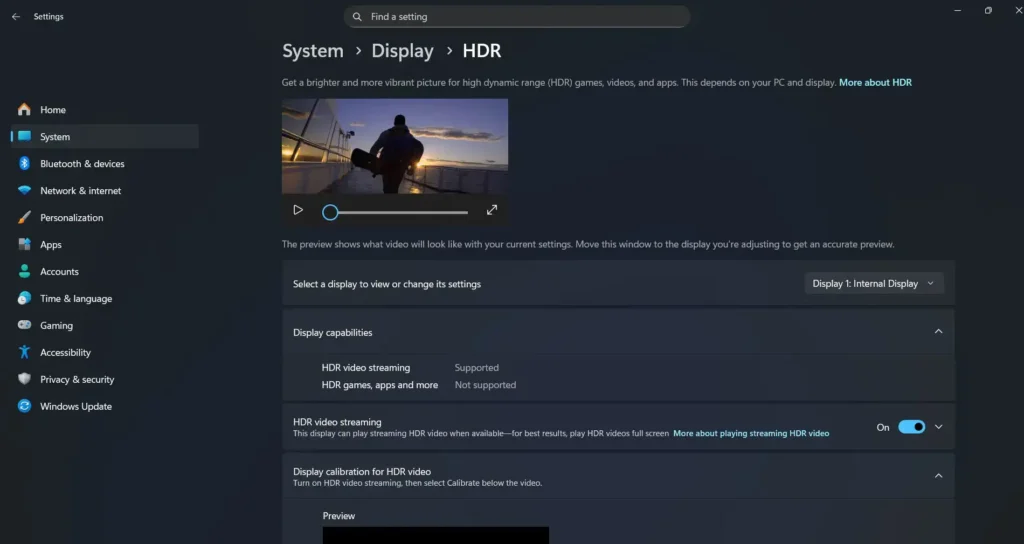
When HDR is enabled, Windows automatically adjusts SDR content brightness to maintain consistency between HDR and standard content. The SDR content brightness slider allows fine-tuning of non-HDR content brightness when HDR mode is active, ensuring traditional music videos still look appropriate alongside HDR concert streams.
Monitor-Specific Calibration Techniques
Different monitor technologies require specific calibration approaches for optimal music video viewing. LCD monitors with LED backlighting often benefit from brightness levels between 120-150 cd/m², while OLED displays can operate effectively at lower brightness levels due to their superior contrast ratios.
For users with quality headphones or premium earbuds, achieving proper audio-visual synchronization becomes important. Monitor input lag and response times can affect the perceived timing between audio and video, particularly noticeable in live concert streams where timing precision matters.
Many monitor manufacturers provide proprietary calibration software that works alongside Windows settings. Dell Display Manager, ASUS ProArt Calibration, and LG OnScreen Control offer manufacturer-specific optimization options that complement Windows’ built-in tools.
Ambient Light Considerations
Room lighting significantly affects optimal display brightness settings for music content viewing. Concert videos often feature dramatic lighting contrasts that require your display to compete with or complement your room’s ambient lighting conditions.
For daytime viewing with significant ambient light, higher brightness settings (300-400 cd/m²) help maintain image visibility and color saturation. Evening or nighttime viewing typically benefits from lower brightness settings (150-250 cd/m²) to reduce eye strain while preserving color accuracy and detail in darker scenes.
The Windows Night Light feature, accessible through Settings > System > Display, automatically adjusts color temperature based on time of day. While primarily designed to reduce blue light emission for better sleep patterns, Night Light can also improve comfort during extended music video viewing sessions.
Professional Color Profile Management
Windows supports ICC (International Color Consortium) color profiles that precisely define how colors should be displayed on your specific monitor. Music industry professionals often use standardized color spaces like sRGB for web content or Adobe RGB for professional video production.
To install a custom color profile, search “Color Management” in the Windows search bar, open it, go to the Profiles tab, and click “Add” to browse and install the ICC profile file. Many monitor manufacturers provide downloadable ICC profiles specifically calibrated for their display models, offering better color accuracy than Windows’ default profiles.
For users serious about color accuracy, consider downloading color profiles from reputable calibration websites or using hardware calibration tools like X-Rite ColorMunki or Datacolor SpyderX. These tools create custom ICC profiles based on your specific monitor’s characteristics and viewing environment.
Troubleshooting Common Display Issues
Brightness adjustment problems often stem from outdated graphics drivers or conflicts between Windows settings and manufacturer software. Ensure your graphics drivers are current by visiting your GPU manufacturer’s website (NVIDIA, AMD, or Intel) and downloading the latest driver packages.
If brightness controls become unresponsive, try resetting Windows display settings to defaults through Settings > System > Display > Advanced display settings > Display adapter properties > Monitor tab > Properties > Driver tab > Roll Back Driver or Update Driver.
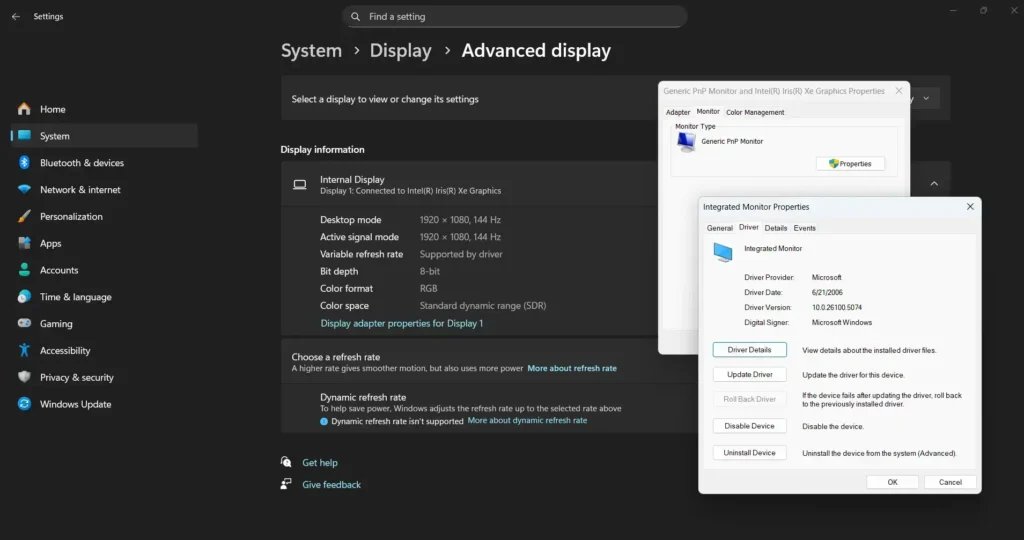
Power management settings can also interfere with brightness controls, particularly on laptops. Check Power Options in Control Panel and ensure display brightness settings align with your power plan preferences. Adaptive brightness features might automatically adjust brightness based on ambient light sensors, which can conflict with manual brightness adjustments.
Optimizing for Different Music Content Types
Different music content types benefit from specific display optimizations. Music videos with high production values often feature carefully controlled lighting and color grading that showcase best with accurate color reproduction and moderate brightness levels. Raw concert footage might benefit from higher brightness and enhanced contrast to compensate for challenging filming conditions.
Live streaming concerts often compress video quality for bandwidth efficiency, making proper brightness and contrast adjustments crucial for maintaining visual quality. Slightly increased brightness and sharpness can help compensate for compression artifacts while preserving the energy and atmosphere of live performances.
Classical music performances typically feature more subtle lighting changes and traditional stage setups, benefiting from accurate color reproduction and comfortable brightness levels that don’t distract from the musical performance. Electronic music concerts often feature elaborate visual effects and laser shows that showcase best with HDR capabilities and higher peak brightness levels.
Frequently Asked Questions
How do I quickly adjust brightness in Windows without opening settings?
Use the brightness slider in the Windows Action Center (notification panel) or use your keyboard’s brightness function keys. Most laptops have dedicated brightness keys, typically F5/F6 or Fn+arrow keys, for immediate brightness adjustment without navigating through menus.
Why does my screen brightness change automatically even after I set it manually?
Windows Adaptive Brightness feature automatically adjusts screen brightness based on ambient light sensors. Disable this by going to Settings > System > Display and turning off “Change brightness automatically when lighting changes.” Power management settings might also override manual brightness adjustments.
What’s the ideal brightness level for watching music videos?
For music videos, aim for 150-250 cd/m² brightness in normal room lighting. This provides good color reproduction without eye strain. Adjust based on room lighting: increase brightness in bright rooms, decrease in dark environments. Use the 10-10-10 rule: every 10 minutes, look at something 10 feet away for 10 seconds.
How do I enable HDR for better concert stream quality?
Go to Settings > System > Display and toggle “Use HDR” if your monitor supports it. Your display must be HDR10-compatible and properly connected via HDMI 2.0+ or DisplayPort 1.4+. Note that enabling HDR may affect color appearance of non-HDR content, requiring adjustment of the SDR brightness slider.
Can I create different brightness profiles for different types of music content?
While Windows doesn’t have built-in brightness profiles, many graphics card control panels (NVIDIA Control Panel, AMD Radeon Settings) and monitor manufacturer software allow creating custom profiles. You can also use third-party tools like f.lux or DisplayFusion to create automated brightness schedules.
Why do colors look different between my laptop screen and external monitor?
Different displays have varying color gamuts, brightness capabilities, and factory calibrations. Use Windows Color Management to assign appropriate ICC profiles to each display. Consider professionally calibrating both displays or using manufacturer-provided color profiles for better consistency between screens.

